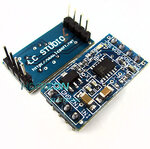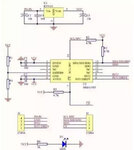Mondalot
Junior Member level 3

Hi,
I have mounted on a protoboard with PIC18F26K22 and accelerometer MMA7455, when I take a while to see values on the screen freezes (hang down), I have to do a reset.
The pic works to 5V and MMA7455 works 3.3V , Among them is connected TXS0108EPWR (8-Bit Bi-directional, Level-Shifting, Voltage Translator for Open-Drain and Push-Pull Applications)
anyway, when the Pic and MMA7455 operate to 3.3 volts,
with their respective resistors (2.2K) on the SDA and SCL lines to 3.3V also froze the I2C bus
What causes might be?
THX.
I have mounted on a protoboard with PIC18F26K22 and accelerometer MMA7455, when I take a while to see values on the screen freezes (hang down), I have to do a reset.
The pic works to 5V and MMA7455 works 3.3V , Among them is connected TXS0108EPWR (8-Bit Bi-directional, Level-Shifting, Voltage Translator for Open-Drain and Push-Pull Applications)
anyway, when the Pic and MMA7455 operate to 3.3 volts,
with their respective resistors (2.2K) on the SDA and SCL lines to 3.3V also froze the I2C bus
What causes might be?
THX.
Last edited:




